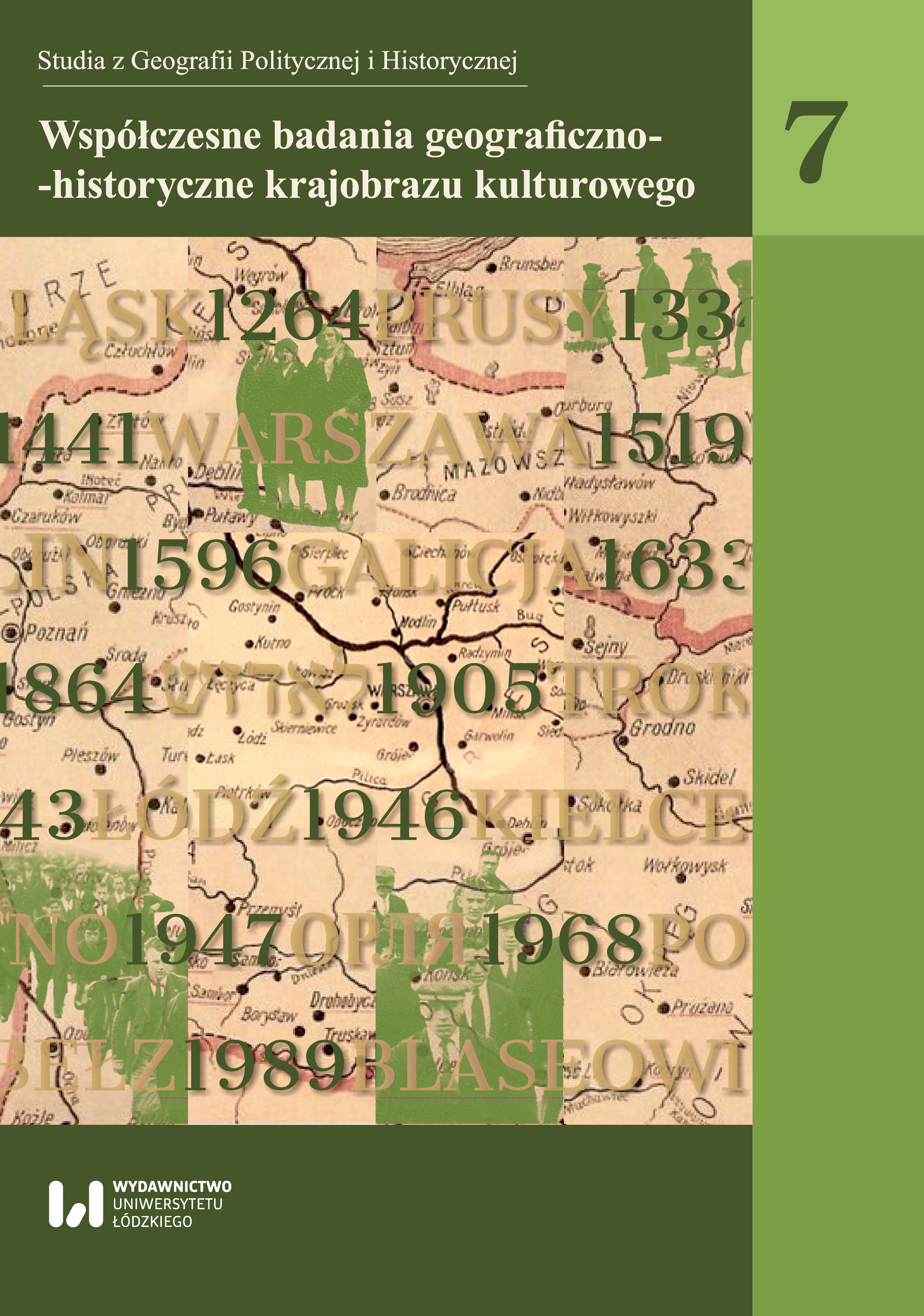O „topografii pustki” w krajobrazie kulturowym. Miejsca niepamięci i nie-miejsca pamięci w kontekście mordów dokonanych na Żydach w Polsce w pierwszych miesiącach po drugiej wojnie światowej
On the “topography of emptiness” in the cultural landscape. Places of non-remembrance non-places of remembrance in the context of victims and circumstances of murders committed on Jews in Poland in the first months after the Second World War
Author(s): Andrzej RykałaSubject(s): Jewish studies, Recent History (1900 till today), History of the Holocaust
Published by: Wydawnictwo Uniwersytetu Łódzkiego
Keywords: Jews; Holocaust; anti-Jewish violence; post-war period; places of memory; places of non-remembrance; non-places of remembrance
Summary/Abstract: Writing about the annihilation of the unprecedented concentration of Jews in Poland, spurred by the unparalleled brutality of German perpetrators, we should also add that in the shadow of the Holocaust, and often hand-in-hand with its main architects, numerous members of Polish society also committed acts of aggression and terror. The most terrifying scale of acts of collective violence against the Jewish population broke out mainly in those areas captured by the Germans (Podlasie, especially its part between Grajew and Łomża, and eastern Galicia), which until mid-1941 were occupied by the Soviet Union. A wave of anti Jewish terror has arrived in Radziłów on July 7. In the three-day pogrom – preceded by the campaign of destroying Torah scrolls and humiliating Jews (including shaving them) initiated by the Germans on July 25, 1941 – local Poles, using the approval from German gendarmes, gathered most of their Jewish neighbours to a barn and burned them there, while the others were caught and killed in different ways. The number of murdered Jews is estimated at 600. This former city did not, however, become a place of remembrance of the execution committed by Polish Christians on their Jewish neighbours. The monument commemorating their martyrdom still bears an inscription: “In August of 1941, the fascists murdered 800 people of Jewish nationality, they burnt 500 of these people in the barn. Honour their memory". The approaching end of the Second World War and the inevitable defeat of Hitler’s Germany did not mean the end of the drama of Jews in the Polish lands. In areas abandoned by German occupation forces, many survivors, often homeless, lonely and frightened, struggling with trauma and pain after the loss of their relatives, experienced further violence. Those guilty of crimes were usually not identified, and even if their identity was established, the acts they had committed did not prevent them in contemporary Poland from being granted the honour of being in the pantheon of the heroes of history written by the national majority (e.g. Józef Kuraś, pseudonym Ogień, responsible for the murders in Podhale). In the opinion of many researchers (among others, A. Całej, H. Datner, D. Engel, A. Skibińska, A. Żbikowski), the war did not contribute in the slightest to softening or discrediting the prejudice of Poles towards Jews. Anti-Jewish stereotypes turned out to be permanent. It did not cause any compassion for the victims of the Holocaust, nor solidarity with them within the society at large. As Irena Hurwic-Nowakowska argued, some part of it considered “the extermination of Jews” as “quite normal” conduct, a continuation of the “values and concepts” “implanted” during the occupation. In turn, the places of many traumatic events, marked by the suffering and death of the Holocaust survivors, have not become points that would spark remembrance in local or supralocal communities. They have arranged themselves, “spread out” into another postwar layer of “burial”, without a “definite place” to lay flowers, meditate or stop. There have been only few commemorations in space of so many cases of post-war violence against Jews. The establishment of a place of remembrance usually happened in relations to those crimes that: had the largest number of victims, occurred in larger cities, have been precisely located and, due to this baggage of characteristics, have been scientifically described (e.g. the Kielce pogrom of July 1946). It should be assumed that these at least 200 places of crimes against the survivors – this approximate number shows that a clear figure is impossible to arrive at this early stage of research – will never be remembered in any form. In striving to identify these tragic points in the historical time-space, it should be of primary importance to make them parts of the collective consciousness. It is therefore paramount that the locations of these events become places of focus for dramatic Jewish histories, assume characteristics that would transform them into carriers of memory of the victims. They should become the attachment points for the local, and non-local, identity (a source of realisation that it happened in this particular town, or its vicinity, here, no matter how hard it is now to say where exactly).
Journal: Studia z Geografii Politycznej i Historycznej
- Issue Year: 2018
- Issue No: 07
- Page Range: 93-132
- Page Count: 40
- Language: Polish

